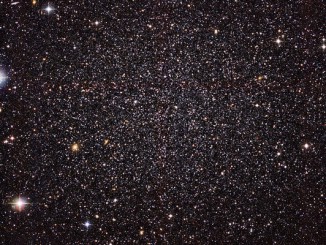The four 1-metre SPECULOOS telescopes at the Paranal Observatory in Chile, designed to Search for habitable Planets EClipsing ULtra-COOL Stars, captured this spectacular view of Centaurus A (NGC 5128), a galaxy 11 million light years from Earth that harbours a 100-million-solar-mass black hole at its core. Discovered in 1826, it is the closest active galactic nucleus and a familiar target for professional and amateur astronomers alike. Researchers attribute the galaxy’s unusual appearance to a collision in the remote past between an elliptical galaxy and a smaller spiral. This image shows red and pink star-forming regions and clusters of young blue stars at top right. The vast dust clouds towards the centre of Centaurus A are slowly being consumed by the central black hole, resulting in powerful radio emissions.

The SPECULOOS telescopes were designed to survey up to 10 times more red dwarf stars than the European Southern Observatory’s pioneering TRAPPIST telescope at La Silla, which has been looking for exoplanets since 2011. A statistical analysis indicates SPECULOOS will find at least 12 multi-planet solar systems similar in size to the TRAPPIST-1 system, which features at least seven terrestrial worlds.



